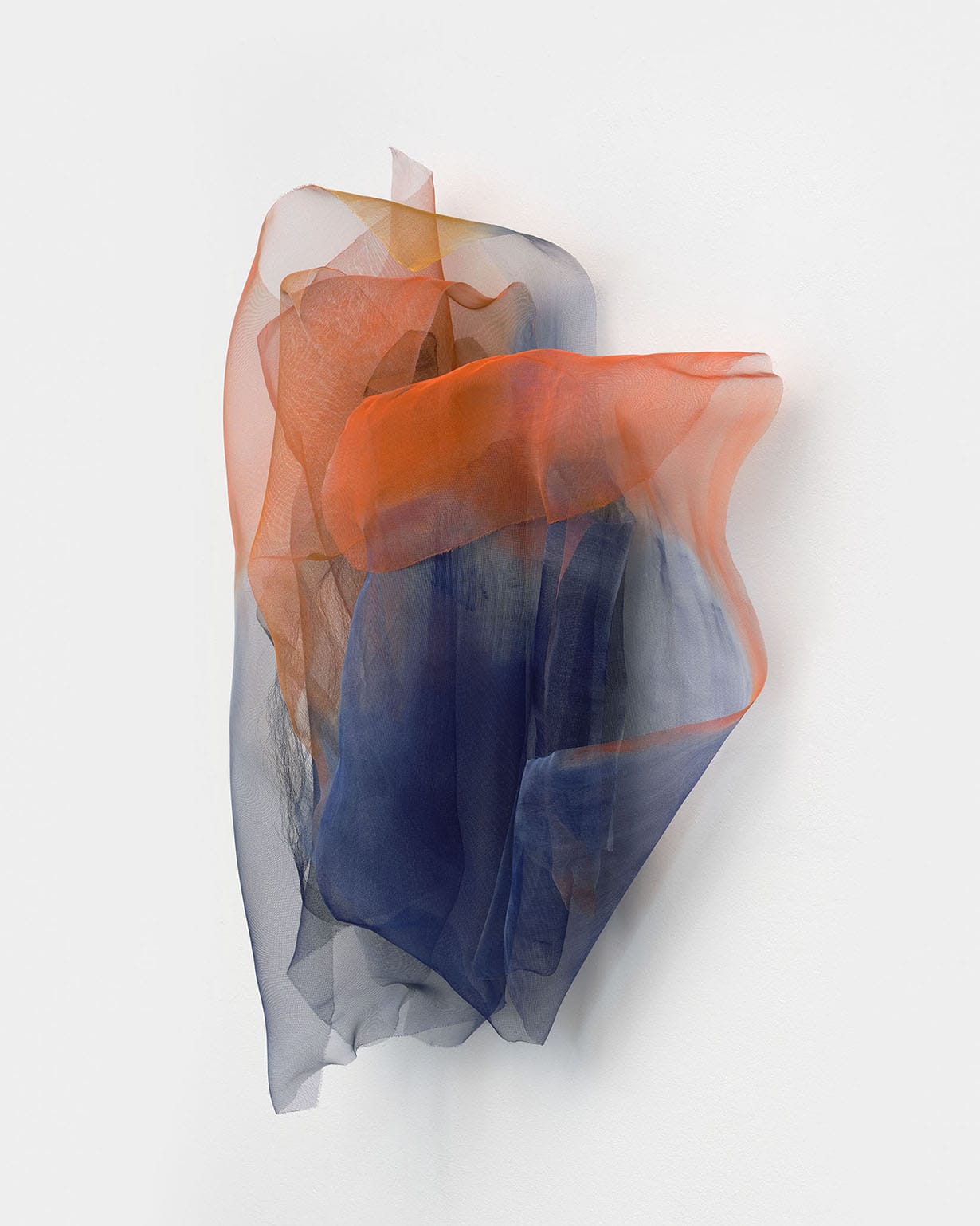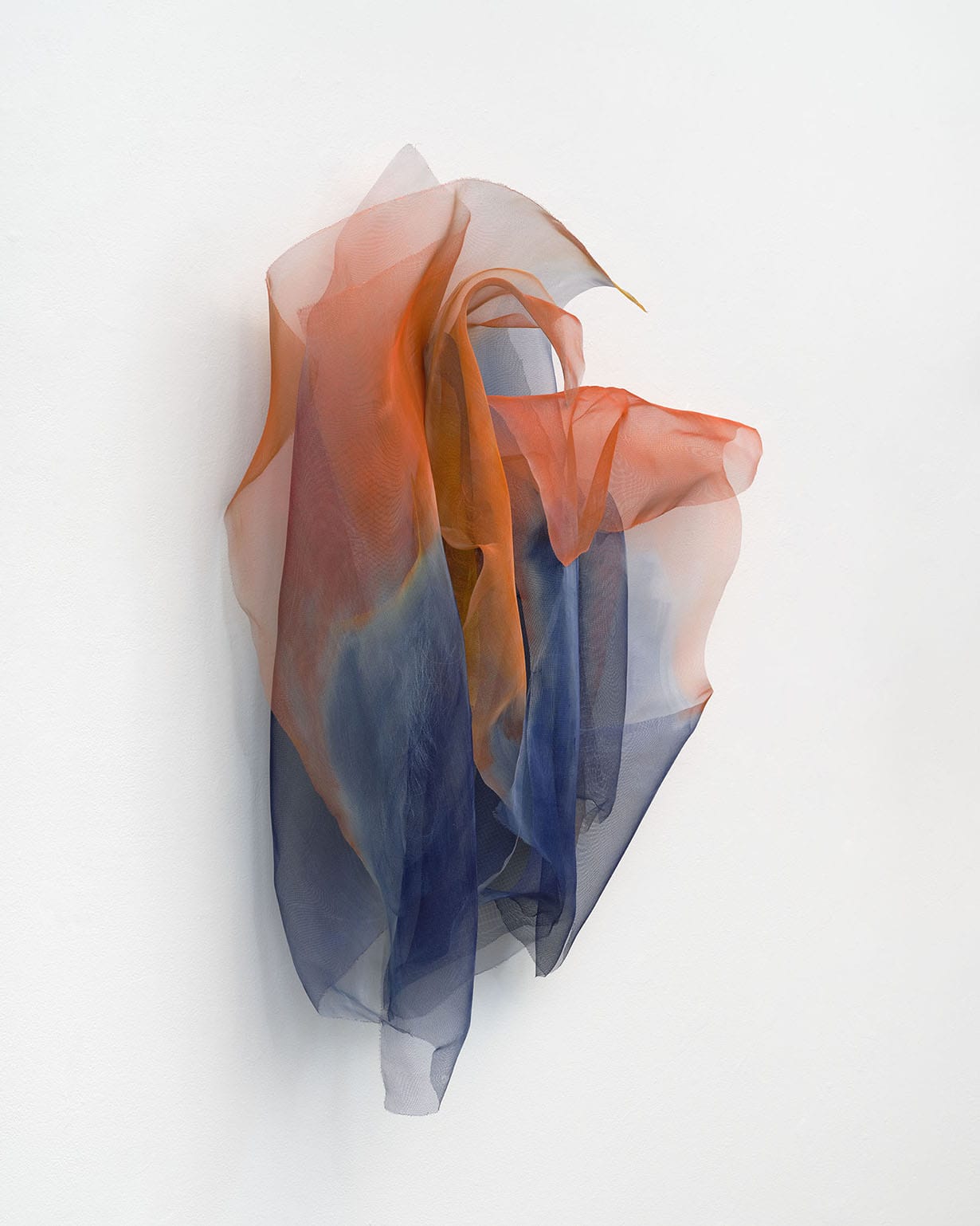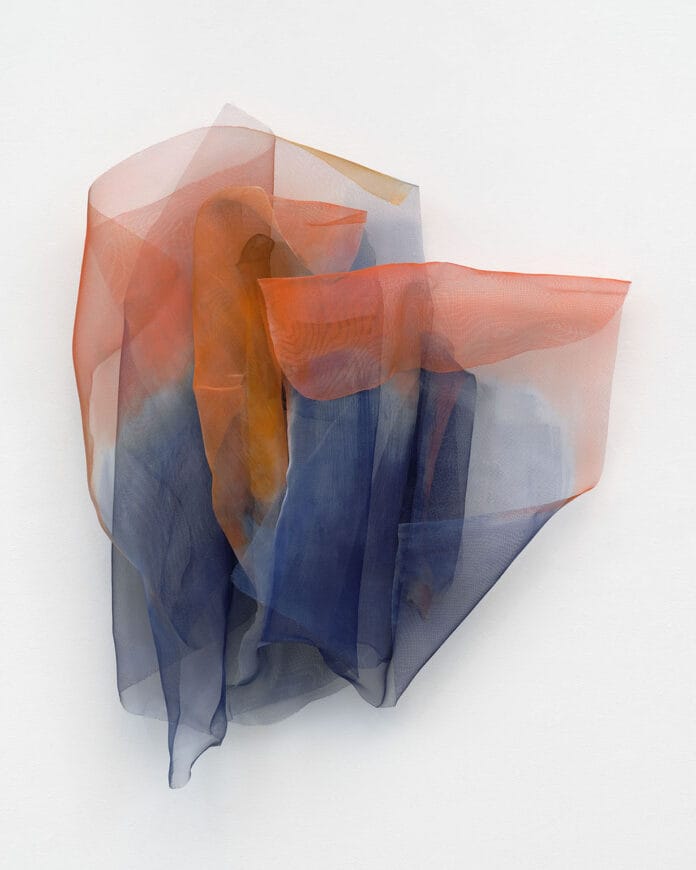Nancy Ivanhoe, a Los Angeles–based artist with a studio in Inglewood, creates works that transcend the boundaries between sculpture, painting, and performance. Influenced by the California Light and Space Movement and her early foundation in dance, Ivanhoe sculpts industrial metal screen into luminous forms that transform light and perception. Her work invites viewers to move, pause, and return, discovering new shapes, patterns, and sensations with each shift in perspective.


A Journey Rooted in Movement
Before turning to sculpture, Ivanhoe studied Martha Graham’s pioneering modern techniques. This background left a profound impact on her artistic vision. Just as Graham emphasized contraction, release, and the fluidity of the body in space, Ivanhoe brings these same principles into her three-dimensional artworks. Her folded, painted mesh sculptures do not remain static; instead, they appear to expand, contract, and unfold as viewers engage with them, echoing the gestures of choreography.
This marriage of movement and material has become a hallmark of her practice, setting her apart within the broader contemporary art landscape.
The Influence of Light and Space
The California Light and Space Movement of the 1960s and ’70s continues to influence Ivanhoe’s artistic vocabulary. Like James Turrell, Helen Pashgian, and Robert Irwin, she is fascinated by perception how light interacts with material, how it reveals or conceals, and how it shifts depending on the position of the observer.
Using industrial metal screen as her primary medium, Ivanhoe paints and folds the material into translucent sculptural forms. These pieces filter and refract light, producing moiré patterns, subtle color transitions, and hidden geometries that seem to emerge from within the work. Rather than presenting a single, fixed image, her sculptures activate space and perception, creating an ongoing visual dialogue between object, light, and viewer.
Material as Movement
The choice of industrial screen is central to Ivanhoe’s exploration of form. Traditionally, a utilitarian material used for filtration, construction, or barriers, the screen becomes something ethereal under her hand. Painted with carefully chosen pigments, folded into layered planes, and shaped into sculptural compositions, it becomes translucent, weightless, and ever-changing.
These sculptural forms blur the boundary between solidity and openness. As viewers move around them, what seemed opaque becomes transparent, and what appeared flat suddenly takes on depth. This dynamic interplay mirrors the rhythm of dance and the flow of music, reinforcing Ivanhoe’s deep connection between art and movement.
Recognition and Exhibitions
Ivanhoe’s innovative approach has earned her recognition both nationally and internationally. She is included in the White Columns Gallery Registry, a respected platform that documents significant contemporary practices. Her commissioned works reside in both private and corporate collections, reflecting the adaptability of her sculptures to diverse architectural and spatial contexts.
She earned her MFA in New Genres from the San Francisco Art Institute, where she was awarded the prestigious Murphy and Cadogan Contemporary Art Award. Her work has been featured in publications such as New American Paintings and FOA Friend of the Artist, expanding her reach within the contemporary art world.
Recent exhibitions highlight her growing impact and visibility. Ivanhoe has shown at Launch LA, Patricia Sweetow Gallery, King Studio in Venice, and Art Share LA, among others. Most recently, her work was presented at Gallery 515 in Los Angeles, further cementing her position within the city’s vibrant art community.
Sculptures as Choreographies of Perception
At the heart of Ivanhoe’s practice lies her desire to create what she calls “visual choreographies.” Much like a dance performance unfolds through time and space, her sculptures unfold visually as viewers move around them. Each step shifts the experience: hidden colors are revealed, moiré patterns shimmer, and new forms emerge from layered folds.
This ongoing transformation means that no two encounters with her work are the same. The sculptures reward patience, curiosity, and attention qualities often demanded of an audience in the theater, now translated into the gallery space.
Expanding the Language of Contemporary Sculpture
In many ways, Ivanhoe extends the legacy of artists who interrogate perception, but her unique synthesis of dance, painting, and sculpture gives her work a distinctly personal language. Her practice is not about stillness or objecthood alone, but about activating space and perception, transforming industrial material into an experience that feels alive.
Her works are as much about the viewer’s body as they are about the object itself. They remind us that perception is not static but constantly shifting, tied to our movements and our position in relation to the world. In this way, Ivanhoe’s art reflects the impermanence and fluidity of life itself.
Conclusion
Nancy Ivanhoe’s work exists at the intersection of light, color, and motion, where industrial material becomes poetic, and perception becomes performance. Drawing from the traditions of modern dance and the California Light and Space Movement, she reimagines the possibilities of sculpture, offering viewers works that are simultaneously physical and ephemeral.
Through her translucent, folded screen sculptures, Ivanhoe continues to shape a practice that bridges disciplines and expands the sensory language of contemporary art. Each piece is a reminder that movement does not only exist in the body, it can be found in light, in color, and in the way we choose to look.


